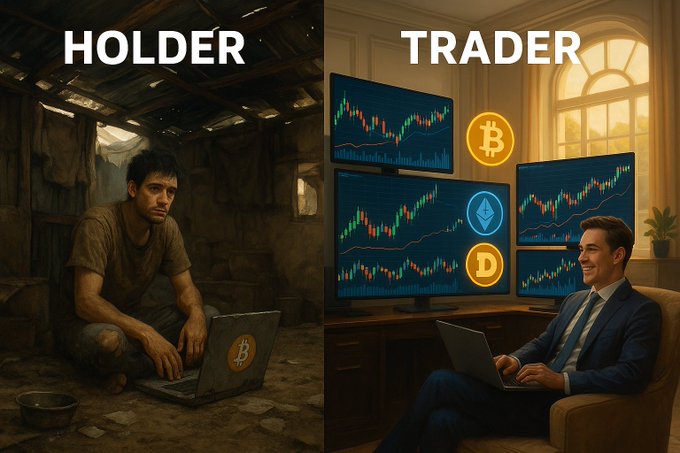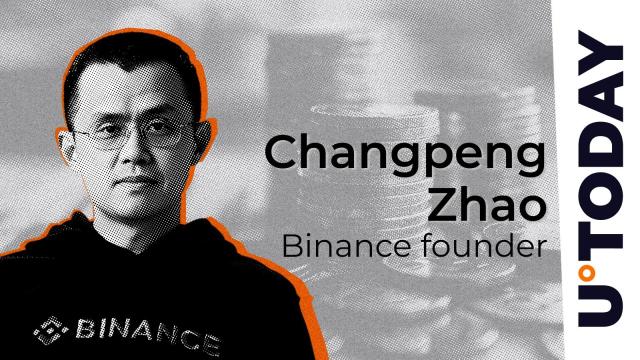After chatting with friends from different circles, I discovered an interesting phenomenon...
It seems that only holders are extremely pessimistic about the current market environment, while most traders do not share the same view.
My top post reveals the "four parallel cycles and four different strategies" that exist simultaneously. Clearly, traders who embrace new rules have become winners, while holders clinging to old experiences have become cannon fodder?
Fundamentally: The "survival rule" of this bull market has completely changed: 🧵
In the previous cycle, the market had a layered community of holders, traders, and builders, where everyone could win by following their investment model. In this cycle, you'll find that both holders and builders are lamenting, and only traders with a gambling flavor can survive in the market.
Next, I will analyze 4 structural changes in the macro environment that may completely reshape your understanding of the current Crypto market ecosystem.
——1) VC funds enter a systematic exit phase: Liquidity shifts from incremental to stock game;
In the previous cycle, VC funds played the role of incremental funds, forming a synergistic effect with retail investor funds to jointly promote a massive bull market. In the current cycle, after crazy deployment in the past 2-3 years, a large amount of institutional funds have entered the harvest period and exit window.
This is manifested in VC coins being labeled as "ignored" and showing a declining characteristic of "high opening + continuous decline". Although VC heavily supports Crypto industry innovation to make money, the key is that the VC exit logic fundamentally conflicts with retail investors' investment logic.
When VC enters the exit period, retail investors are actually paying the liquidity bill for institutional investors' exit.
This explains why "peak at listing" has become the fate of VC coins even in a bull market.
——2) Fundamental reconstruction of industry narrative ecology: Short and quick MEME defeats long-termism of technical narrative;
In previous cycles, innovation was distributed in sections, and funds also flowed in a sectional manner.
DeFi Summer had a clear 6-month construction and outbreak period, the NFT boom extended from art collection to metaverse with a complete 9-month narrative cycle, and GameFi from Axie Infinity's Play-to-Earn concept to the entire sector's ecosystem construction also had a clear 12-month development context.
You see, each sector had its own technical logic, application scenarios, and value accumulation process. More importantly, they all had clear "retail participation and exit windows". Ordinary investors could enter early in sector rotation and obtain excess returns by following narrative development.
But the rise of MEME completely changed these game rules.
What are the characteristics of MEME? Takeoff in 7 days, peak in 30 days, close to zero in 3 months. Ask yourself, when speculative funds can obtain over 10 times returns within a month through market-making or speculative gambling, who would be willing to wait for a 2-year construction cycle of technical projects?
MEME is not wrong, but the trend of chasing ultra-short cycle MEME gameplay has completely crushed the survival and development space of traditional technical narrative.
Driven by short-term interests, the funds and innovative forces behind MEME have fallen into a vicious cycle of speculation and conspiracy manipulation. The result is that teams truly doing technical development cannot get funding support, while projects packaging concepts receive massive attention.
Finally, when the market changes from "inclusive sector rotation" to "professional high-frequency harvesting", retail investors lose their opportunity window to profit by following technical narrative development.
——3) Macro liquidity tightening and internal narrative overload: Innovation dilemma under double squeeze;
On the external environment, repeated adjustments of Federal Reserve interest rate expectations, continuous fermentation of geopolitical risks, and traditional financial market's cautious attitude towards risk asset allocation are all compressing the incremental fund sources of the Crypto market. Especially, the strong performance of US tech stocks and AI concept stocks provides "safer" high-yield options for risk funds, further squeezing Crypto's funding channels.
On the internal environment, the industry is trapped in a "narrative overload" dilemma. Layer2, Restaking, zkVM, AVS, modularization, chain abstraction, Intent... The dense emergence of technical concepts far exceeds the market's digestion capacity, and in terms of user experience, actual application, and value delivery, it is far from expected.
In my view, the deep-seated problem is that the Crypto industry has transformed from being led by geek innovation culture to an involution-style competition driven by market speculative demand.
Early Crypto innovation focused on "decentralization, anti-censorship, performance TPS" and was problem-oriented. But in the current stage, some projects are working on "how to package concepts to attract investment".
The result is that concepts become more cool, technical stacks become more complex, but ordinary users cannot feel actual value.
Ultimately, external funds' caution and internal innovation's confusion form a vicious cycle: The market no longer cares how advanced your technology is, only whether your story is attractive enough. This inverted incentive mechanism is strangling real innovation, and the entire industry's value judgment system is beginning to collapse.
——4) CEX role transformation: From ecosystem builder to liquidity harvesting machine;
In the previous cycle, mainstream CEXs like Binance enjoyed huge dividends of institutional funds entering and incubating primary projects, promoting quality project growth through Launchpad, labs investment incubation, etc., with extremely prominent "listing effects".
At that time, exchanges holding massive users and liquidity indeed played the role of value discovery and liquidity distribution.
But in the current cycle, CEXs have become industry dividend "consumers" and liquidity "harvesters", with big brothers shouting "Build" but letting go of real-world manifestations, practically demonstrating "Binance has no dreams".
Now, listing not only lacks money-making effects but has become a "peak takeover signal". Originally expecting Binance Alpha to become a cradle for innovation force incubation and guidance, it has actually become another "killer product" grabbing market user share and squeezing liquidity.
Listing observation areas, airdrop point systems are just using internet product thinking to operate retail investors as a "traffic pool".
The core logic is that CEXs face significant operational costs to meet risk control and compliance needs, and are forced to "maintain profitability" using accumulated user pool advantages.
Strategically, they shift from actively supporting projects to passively screening projects, from bearing market liquidity risks to avoiding risks... from creating incremental value to distributing and squeezing stock liquidity.
As a result, the originally healthy "exchange-project-user" three-party win-win ecosystem is broken. Exchanges no longer bear the responsibility of value discovery, project parties lose important growth channels, and users become harvested traffic pools.
It's sad that when the most important liquidity hub of the industry starts to "lie flat and collect rent", the entire ecosystem's innovative vitality is systematically drained.
That's all.
Combining these 4 structural changes, we can clearly see a cruel reality:
Holders face a market where technical faith has collapsed, long-termism has failed, and value investment logic has been completely bankrupt; while traders face a paradise of abundant liquidity, huge volatility, and speculative opportunities everywhere.
They are fundamentally not facing the same market.
In the short term, the trader's strategy indeed adapts better to the current environment, but in the long term, when the entire industry becomes a zero-sum gambling arena, the foundation of innovation will be eroded, and the market's sustainable development will lose its momentum. After holders, traders' survival environment will also be squeezed dry, and ultimately, the market will have no winners.
Perhaps, this is the "painful period" that the Crypto industry must go through to mature.
The market eliminates participants who are not adapted to the new environment in the most brutal way, and is also using the last speculative carnival to burst this casino-like survival environment.
As a persistent holder, I at least have a simple dream: "When speculation is pushed to the extreme and when the casino-like environment reaches its peak, the market may find a completely new balance point after thorough "disenchantment" - returning to the essence of technological innovation and value creation."
Note: Tell your story, what is the most frustrating thing for you as a holder? What have you gained as a new trader in the new situation?








